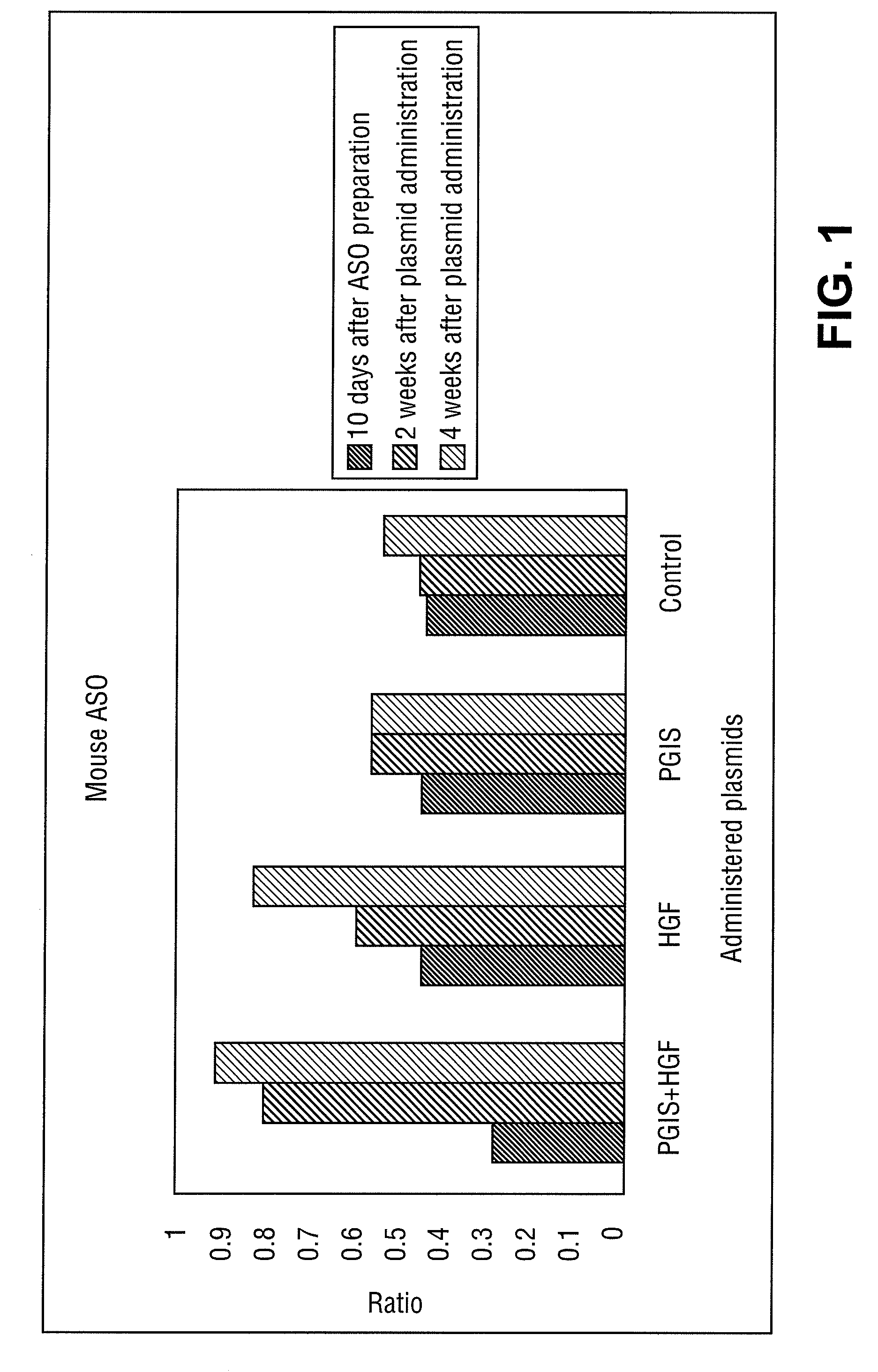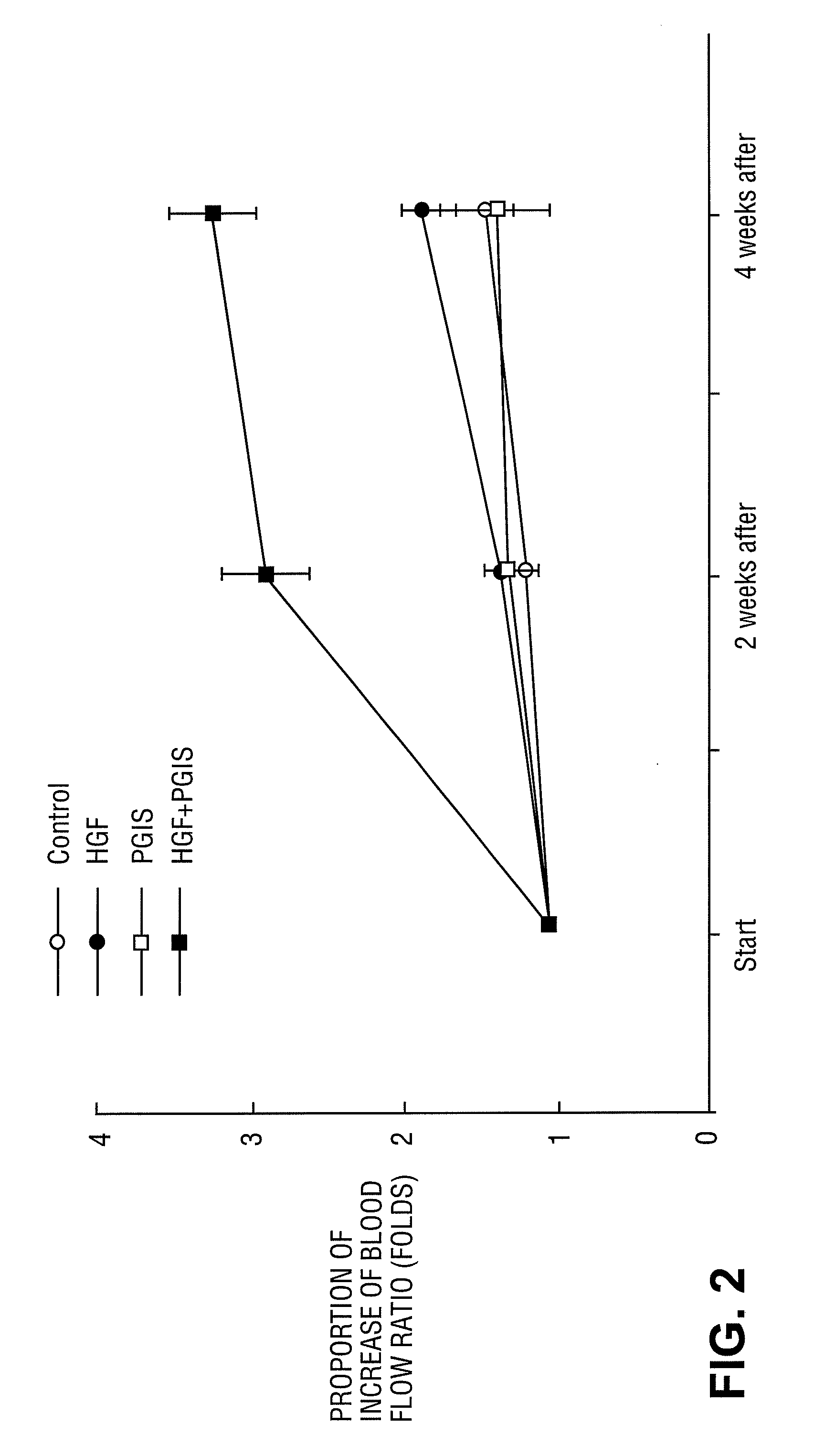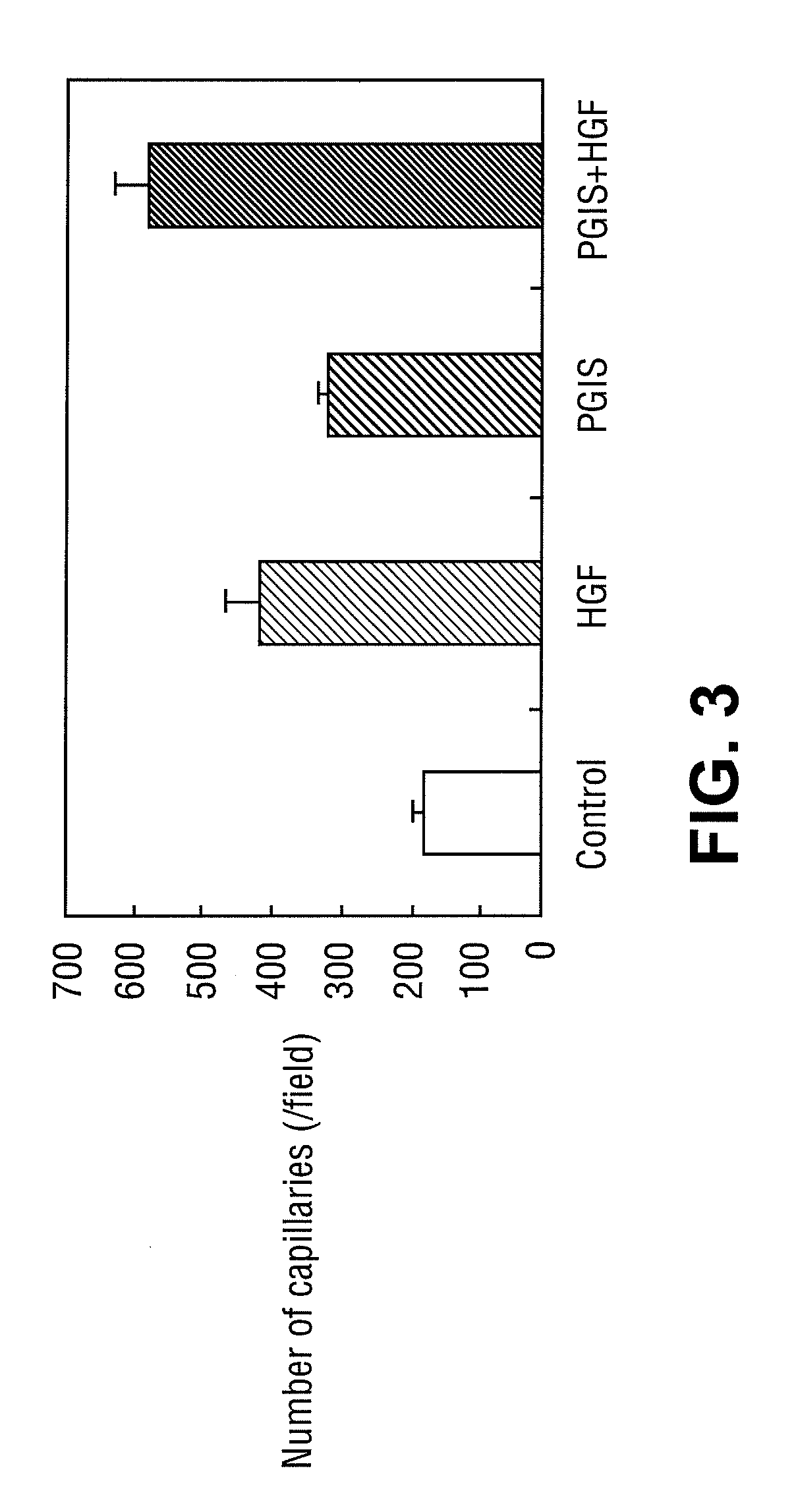Pharmaceutical Compositions for Angiogenic Therapy
- Summary
- Abstract
- Description
- Claims
- Application Information
AI Technical Summary
Benefits of technology
Problems solved by technology
Method used
Image
Examples
example 1
[0144]Effect of Administration of HGF Gene, or PGIS Gene to Mouse Hind Limb Ischemia ASO Model
[0145](1) Materials
[0146]The cDNA of human HGF (described in Unexamined Published Japanese Patent Application No. (JP-A) Hei 5-111383 herein incorporated by reference in its entirety) was cloned by a conventional method, and was inserted into an expression plasmid pcDNA3.1 (+) (Invitrogen) containing a cytomegalovirus (CMV) promoter to be used as human HGF gene.
[0147]The cDNA of human PGIS (B.B.R.C., Vol. 200, No. 3, p 1728-1734 (1994) herein incorporated by reference in its entirety) was cloned by a conventional method, and was inserted into an expression plasmid pCAGGS (Gene 108, 193-200 (1991)) containing a CMV enhancer and a .beta.-actin promoter to be used as human PGIS gene.
[0148](2) Methods
[0149]C57BL / 6J mouse (8 weeks old, male) was used. The mouse was anesthetized by intraperitoneal injection of 200 .mu.l of 10-fold diluted Nembutal, and further by ether inhalation when supplementa...
example 2
Effect of Administration of HGF Gene, and Ets-1 Gene to Rat Hind Limb Ischemia ASO Model
[0153](1) Materials
[0154]An expression plasmid carrying the human HGF gene, which is the same as that of Example 1, was used. The cDNA of human ets-1 (GenBank Acc. No. J04101, Proc. Natl. Acad. Sci. U.S.A., 85 (21), 7862-7866 (1988)) was cloned by a conventional method, and was inserted into a commercially available expression vector to be used as human ets-1 gene.
[0155](2) Methods
[0156]Sprauge Dawley rats (12 weeks old, male) were used. The femoral artery from one side was extirpated to produce a rat hind limb ischemia ASO model. One week later, 100 .mu.g each of the genes was administered into the left hind limb muscle using the HVJ-liposome method. Four groups were set up: a control group wherein the vector was administered alone; a group given the HGF gene alone; a group given the ets-1 gene alone; and a group wherein the HGF gene and ets-1 gene were used in combination. Using Laser Doppler I...
example 3
Effect of Administration of VEGF Gene, and PGIS Gene to Mouse Hind Limb Ischemia ASO Model
[0161](1) Materials
[0162]The cDNA of human VEGF165 (gift from Prof. Yonemitsu at Kyushu University Department of Surgery II) was cloned by a conventional method, and was inserted into the EcoRI site of expression plasmid pCAGGS (Gene 108, 193-200 (1991)) having a CMV enhancer and a .beta.-actin promoter to be used as human VEGF gene.
[0163]The cDNA of human PGIS (B.B.R.C., Vol. 200, No. 3, p 1728-1734 (1994)), was cloned by a conventional method, and was inserted into an expression plasmid pCAGGS (Gene 108, 193-200 (1991)) having a CMV enhancer and a .beta.-actin promoter to be used as human PGIS gene.
[0164](2) Method
[0165]1. C57BL / 6J mouse (8 weeks old, male) was used. The mouse was anesthetized by intraperitoneal injection of 200 .mu.l of 10-fold diluted Nembutal, and further by ether inhalation when supplementation was necessary. Then, the arteriovenous of the left hind limb was tied up to pr...
PUM
 Login to View More
Login to View More Abstract
Description
Claims
Application Information
 Login to View More
Login to View More - R&D
- Intellectual Property
- Life Sciences
- Materials
- Tech Scout
- Unparalleled Data Quality
- Higher Quality Content
- 60% Fewer Hallucinations
Browse by: Latest US Patents, China's latest patents, Technical Efficacy Thesaurus, Application Domain, Technology Topic, Popular Technical Reports.
© 2025 PatSnap. All rights reserved.Legal|Privacy policy|Modern Slavery Act Transparency Statement|Sitemap|About US| Contact US: help@patsnap.com



